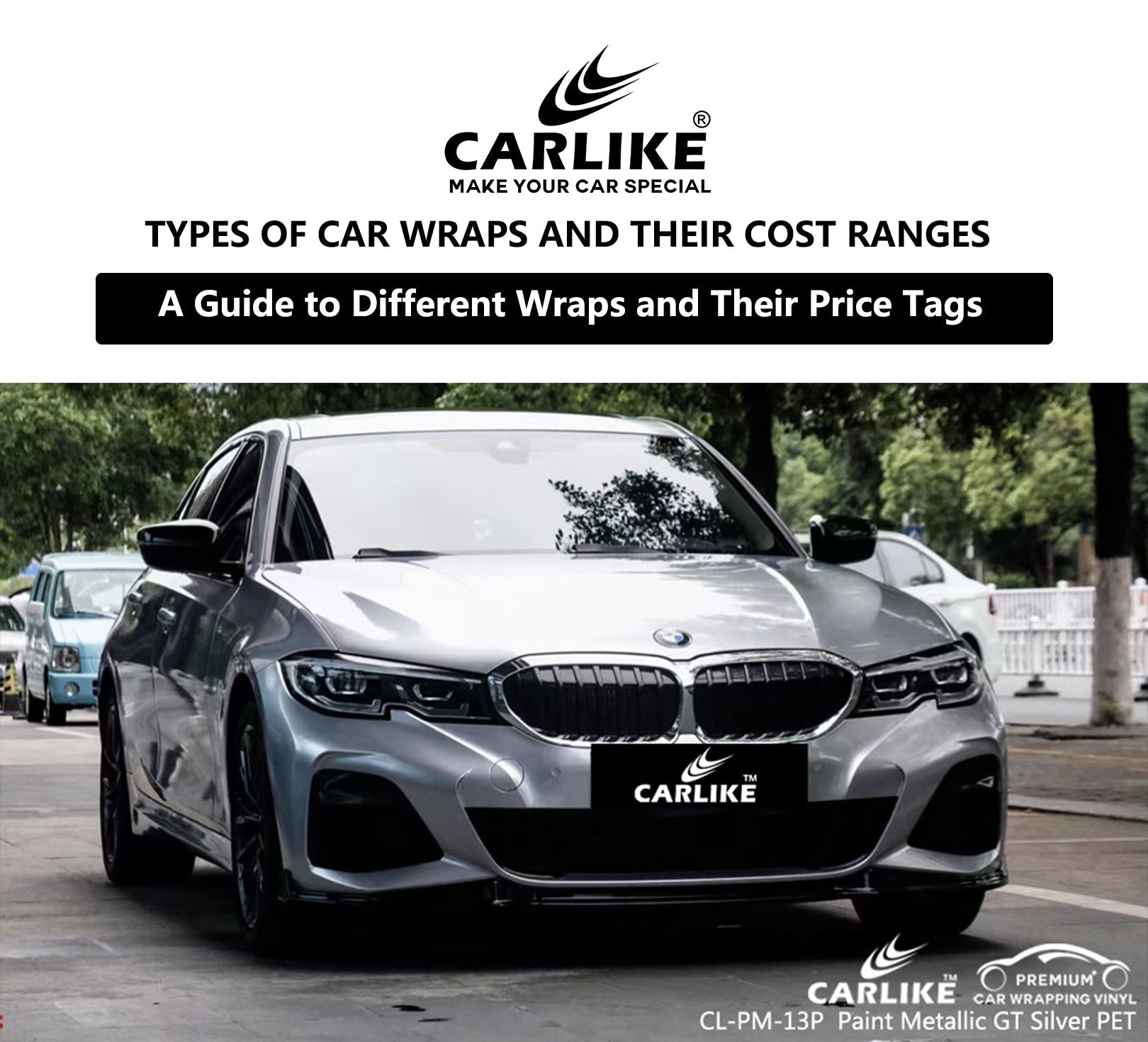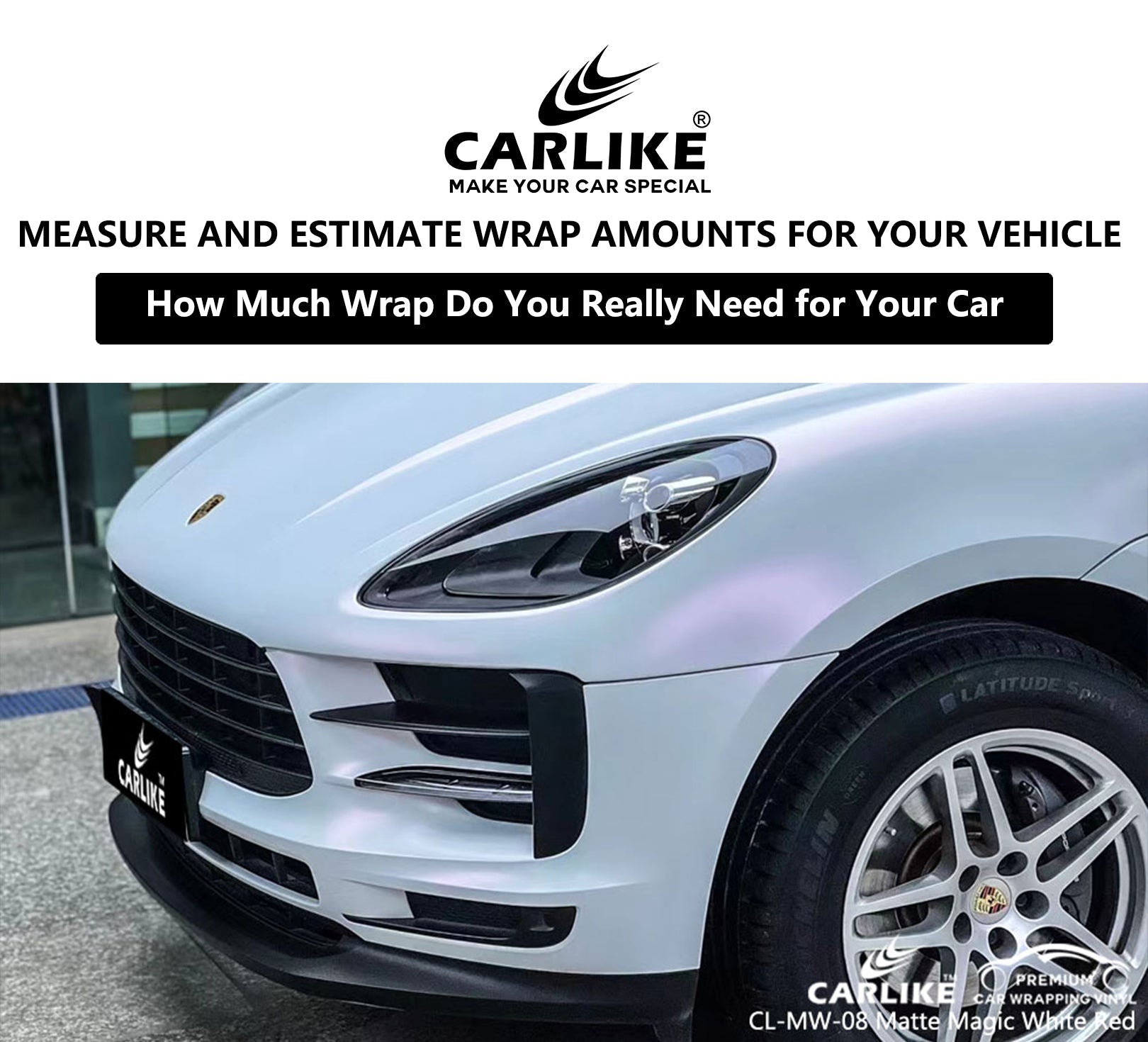Why People choose to vinyl wrap their cars
Vinyl wrapping a car involves applying a specialized vinyl film over the vehicle's exterior surface to change its appearance or provide protection. People choose to vinyl wrap their cars for several reasons:
1. Aesthetic Changes: One of the primary reasons people opt for vinyl wrapping is to change the appearance of their vehicles. Vinyl wraps come in a wide variety of colors, finishes, and textures, allowing car owners to achieve custom looks that suit their preferences. Whether it's a matte finish, glossy shine, or even a unique pattern or design, vinyl wrapping provides endless possibilities for customization.
2. Paint Protection: Vinyl wraps act as a protective layer for the car's original paintwork. They shield the paint from scratches, stone chips, and other minor damages caused by debris on the road. This protective layer helps preserve the car's factory paint job, maintaining its resale value and appearance over time. Additionally, vinyl wraps are removable, so if the wrap becomes damaged or the owner wants to change the look of the car, it can be easily replaced without affecting the underlying paint.
3. Temporary or Reversible Modification: Unlike traditional paint jobs, vinyl wrapping offers a temporary modification solution. Car owners can experiment with different colors and finishes without committing to permanent changes. This flexibility appeals to individuals who enjoy regularly updating the appearance of their vehicles or those who want to maintain the option to revert to the original look.
4. Cost-Effectiveness: Vinyl wrapping is often more cost-effective than repainting a car. The process requires less time and labor compared to traditional painting methods, resulting in lower overall expenses. Additionally, vinyl wraps can be applied to specific areas of the car rather than the entire surface, allowing for targeted customization while reducing costs.
5. Advertising and Branding: Vinyl wrapping is also popular among businesses and companies for advertising purposes. Vehicles wrapped with company logos, branding elements, or promotional messages serve as mobile advertisements, increasing brand visibility and exposure. This form of advertising is often more eye-catching and cost-effective than traditional methods like billboards or print ads.
Overall, vinyl wrapping offers a versatile and practical solution for enhancing the appearance, protecting the paint, and promoting branding on vehicles. Its popularity continues to grow due to its affordability, customization options, and ease of application.
So, are you interested in car wraps? What if you also want to change clothes for your car? So how to do it?
Ⅰ Preparation
1. Cleaning the car surface thoroughly
- Start by washing the entire car with soap and water to remove any dirt, grease, wax, or other contaminants from the surface.
- Use a microfiber wash mitt or sponge to scrub the surface gently, paying extra attention to areas with heavy grime buildup. - Rinse the car thoroughly with clean water to ensure all soap residue is removed.
- After washing, dry the car completely using a clean microfiber towel or a chamois to prevent water spots.
2. Gathering tools and materials
- Vinyl wrap material: Purchase the appropriate amount and type of vinyl wrap for your car. Consider factors such as color, finish (matte, glossy, etc.), and quality.
- Application tools: Gather tools such as a squeegee, heat gun or hairdryer, cutting knife or precision cutting tool, masking tape, and surface cleaner or isopropyl alcohol.
- Workspace preparation: Choose a well-lit and clean workspace preferably indoors to minimize dust and debris during the wrapping process. Ensure the area is well-ventilated if using adhesives or solvents.
- Personal protective equipment (PPE): Wear gloves to protect your hands and safety glasses to protect your eyes during the vinyl wrapping process. - Surface preparation products: Acquire cleaning products such as automotive soap, waterless wash solution, or specific vinyl wrap surface cleaners to ensure the car surface is free from contaminants before wrapping.
3. Inspecting the car surface
- Before applying the vinyl wrap, inspect the car surface for any existing damage, scratches, or imperfections that may affect the adhesion of the vinyl.
- Address any minor imperfections by sanding or polishing the surface as needed. Fill in any deep scratches or dents with appropriate automotive fillers and allow them to dry completely before proceeding.
4. Protecting sensitive areas
- Use masking tape or painter's tape to cover sensitive areas of the car, such as door handles, side mirrors, emblems, and trim pieces, to prevent accidental damage during the wrapping process.
- Additionally, consider removing any removable parts or accessories, such as license plates, to facilitate the wrapping process and ensure a clean and professional finish.
Ⅱ Choosing the right car vinyl wrap
1. Matte Vinyl Wraps
Matte vinyl wraps provide a non-reflective, smooth finish that adds a sleek and understated look to your vehicle. They are available in a wide range of colors and are popular for giving cars a modern and distinctive appearance. Matte finishes are excellent for hiding minor imperfections on the car's surface and are relatively easy to maintain. They are a great choice for those seeking a subtle yet stylish transformation for their vehicle.
2. Glossy Vinyl Wraps
Glossy vinyl wraps offer a high-shine, reflective finish that gives cars a polished and vibrant appearance. These wraps are available in an extensive array of colors and are known for their eye-catching appeal. Glossy finishes enhance the depth and richness of the color, making the vehicle stand out on the road. They are ideal for those who prefer a glossy, showroom-quality finish for their car and want to make a bold statement.
3. Metallic Vinyl Wraps
Metallic vinyl wraps feature metallic flakes embedded in the vinyl material, creating a shimmering and dynamic effect when exposed to light. These wraps come in various metallic hues, such as silver, gold, bronze, and more, and add a touch of sophistication and luxury to the vehicle's appearance. Metallic finishes are perfect for those who desire a modern and elegant look for their car, as they offer a unique depth and luster that traditional solid colors may lack.
When selecting the appropriate vinyl wrap for your vehicle, consider factors such as your personal preferences, the desired aesthetic effect, and the overall style of your car. Additionally, take into account the quality and durability of the vinyl material, as well as the expertise of the installer. Whether you opt for a matte, glossy, metallic, or color-shifting finish, choosing the right vinyl wrap can transform your vehicle and enhance its visual appeal.
Ⅲ Steps of how to wrap a car
1. Surface Preparation
Before applying the vinyl wrap, it's crucial to ensure that the car surface is clean and free of any dirt, dust, grease, or wax. Use a gentle car wash detergent and water to thoroughly clean the surface. Then, wipe it down with isopropyl alcohol to remove any remaining residues and ensure proper adhesion of the vinyl wrap.
2. Measuring and Cutting
Measure the areas of the car you intend to wrap carefully, using measuring tape and marking them with masking tape if necessary. Then, use these measurements to cut the vinyl wrap material to the appropriate size and shape using a sharp utility knife or vinyl cutter. It's essential to be precise during this step to ensure the vinyl wrap fits accurately and covers the desired areas without excess material.
3. Applying the Wrap
Start by peeling off a small portion of the backing from the vinyl wrap and aligning it with the area you're wrapping. Use a squeegee or soft applicator tool to smooth out the vinyl wrap, starting from the center and working your way outwards. Apply even pressure to ensure there are no air bubbles or wrinkles trapped underneath the wrap. Continue peeling off the backing and applying the vinyl wrap gradually, working in small sections until the entire area is covered. Pay special attention to curves, edges, and contours, ensuring the wrap conforms smoothly to the car's shape. If necessary, use a heat gun to soften the vinyl wrap and facilitate molding around complex curves.
4. Trimming and Finishing
Once the vinyl wrap is applied to the entire surface, trim any excess material using a sharp utility knife or vinyl cutter. Carefully cut along the edges of the car body or panel lines to ensure a clean and precise finish. Take your time during this step to avoid damaging the car's paint or leaving jagged edges. After trimming, use the squeegee to firmly press down the edges of the vinyl wrap to ensure they're securely adhered to the car surface. Inspect the entire wrap for any imperfections or areas that may need additional attention, and make any necessary adjustments to achieve a flawless finish.
Following these steps meticulously will help you achieve a professional-quality vinyl wrap on your car, transforming its appearance while providing protection to the underlying paintwork.
FAQ for how to vinyl wrap a car?
Q: Can I vinyl wrap my car by myself, or should I hire a professional?
A: While it's possible to vinyl wrap a car yourself, it requires patience, attention to detail, and the right tools. Hiring a professional installer is often recommended for the best results, especially if you lack experience or are working with complex curves and surfaces.
Q: How long does it take to vinyl wrap a car?
A: The time it takes to vinyl wrap a car depends on various factors, including the size of the vehicle, the complexity of the design, and the skill level of the installer. On average, a professional installer can complete a full car wrap in a few days, while DIY projects may take longer.
Q: Is vinyl wrapping reversible?
A: Yes, vinyl wrapping is reversible. Unlike paint, vinyl wraps can be removed without damaging the car's original paintwork, making it a popular choice for temporary or semi-permanent vehicle customization.
Q: How long does a vinyl wrap last on a car?
A: The lifespan of a vinyl wrap on a car depends on various factors, including the quality of the vinyl material, the installation technique, and how well the vehicle is maintained. High-quality vinyl wraps can last up to 5-7 years or more with proper care.
Q: Can I wash my car after it's been vinyl wrapped?
A: Yes, you can wash your car after it's been vinyl wrapped. However, it's essential to use gentle cleaning methods and avoid abrasive materials or harsh chemicals that could damage the vinyl. Hand washing with a mild detergent and soft cloth is recommended.
Final Words
Vinyl wrapping a car presents an exciting opportunity for car enthusiasts and businesses alike to elevate their vehicles' appearance and protection. Through meticulous preparation, precise application, and attention to detail, anyone can achieve professional results. Despite potential challenges like ensuring proper adhesion and avoiding air bubbles, the benefits far outweigh the hurdles.











